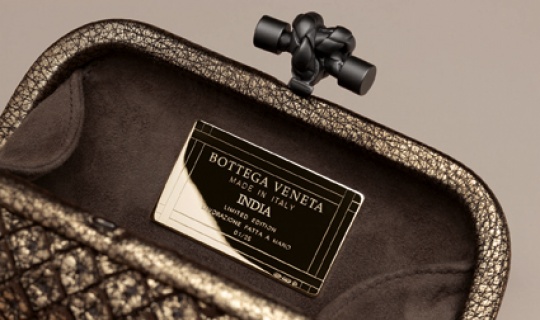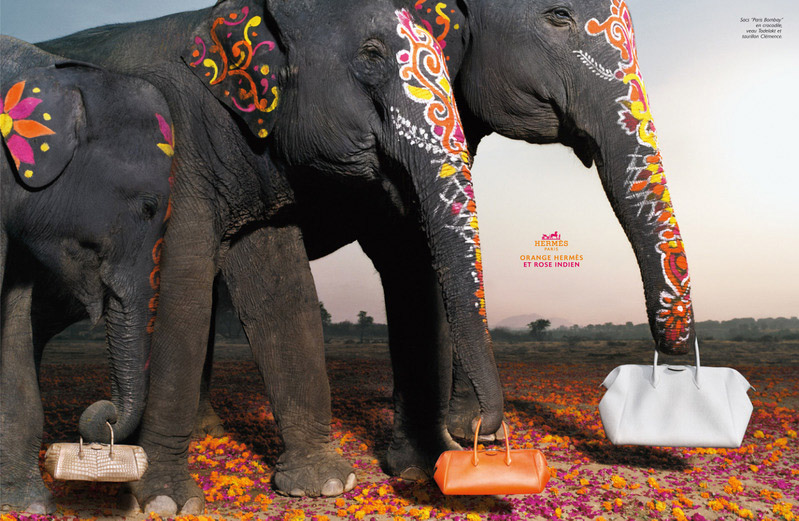
Oliver Petcu, managing partner of CPP Management Consultants, suggests a lack of suitable retail spaces & foreign investment restrictions make India a tough luxury market
A dress from Louis Vuitton’s Diwali collection, Sari’s by Hermès
Oliver Petcu, managing partner of CPP Management Consultants, suggests a lack of suitable retail spaces & foreign investment restrictions make India a tough luxury market
Asia’s third largest economy, growing at a rate of 7% and home to over 200.000 millionaires, India is one of the toughest luxury markets in the world. In my view, the lack of suitable luxury retail spaces and the restrictions on direct foreign investment are the two most significant factors hindering the development of India’s luxury market. India’s largest cities lack suitable street retail locations or the ability to create shopping streets within an appropriate environment. Retailers are hindered by less than desirable surrounding neighbourhoods, cleanliness and security, which is unlikely to change in the coming decade.
Recently, French luxury house Hermès opened a 3,000 sqf stand alone store in Mumbai, being thus the first international brand to open a street level store. With the occasion of the opening, the company’s regional executive stressed that luxury stores should come out of malls and hotel galleries and open in the street. I beg to differ with this approach!
Hermès is a brand in a league of its own, which has always had a unique approach to international expansion, both in the selection criteria and type of real estate, always standing out among other international luxury brands. I would say, Hermès is probably the only major international luxury brand which can afford to open a ‘’destination location’’ such as the recent opening in Mumbai.
“ Asia’s third largest economy, growing at a rate of 7%, home to over 200.000 millionaires ”
How would luxury retail improve if, let’s say, Louis Vuitton opened a street location on one side of Mumbai, with Chanel and Prada in different areas? Customers would have to hassle through Mumbai’s traffic jams and spend hours from one location to the other. Presently luxury stores are scattered around at different locations, yet within short distances, for example the proximity of shopping galleries at Taj and Oberoi hotels. If the executive from Hermès meant suggesting that other brands should open in the area where they themselves have opened, that seems almost impossible, given the area is rife with banks. I wonder how many of the international brands would afford to buy or lease a location in this area and still make a profit?
The second most important challenge in India’s luxury market is the legislation which limits direct foreign investment, international companies are currently obliged to form a joint venture company with a local partner, to be able to operate in India. This is why, most international luxury brands, have had no other choice but to accept to operate through a local partner.

Bottega Veneta’s limited edition ‘Knot India’ clutch
Following disappointing performance, brands such as Gucci, Armani or Burberry have terminated joint venture agreements with major retail companies and have instead formed a company, still with a local enity, as a formality, in order to operate directly. However, the majority of the brands – Zegna, Canali, Salvatore Ferragamo, Jimmy Choo, Brioni – continue to operate through franchising with one of the local major luxury retailers: Genesis, Reliance, Blue Clothing and DLF.
Juggling several brands, most of the local luxury retailers have been unable to ensure a high quality of customer service, on par with the service expected in the international locations of the respective brands. Their lack of expertise and experience in buying has also resulted in an unsuitable representation of the collections, where wealthy Indian consumers are finding a limited range of products as well as a lack of selection in sizes. The fact that taxation leads to prices of luxury goods in India to be at least 20 or 25% higher is an important aspect, however not as crucial as customer service and buying expertise.
“ international companies are currently obliged to form a joint venture company with a local partner, to be able to operate in India ”
That is why, to compare India to China is irrelevan ! Why not look at Russia where still prices of luxury goods are at least 30% higher than in Western Europe, yet Russians buy locally? Russia has transitioned in the past five years from multi-brand and franchised distribution model, to brand owned operations, with most major international brands setting up representative offices in the country’s capital.
This has translated into luxury brands being able to provide a similar customer experience and product selection similar to Western markets. Given the increasing travel costs, many Russians, who used to make shopping trips, now prefer to buy locally. An important segment of Russians still buy abroad, but mostly during holidays and their buying patterns and preferences are different.

An advertising campaign for Hermès India
When analysing the Indian luxury market, one must also be aware that luxury brands in India will not necessarily attract the top Indian billionaires. Business media outlets frequently highlight high profile billionaires shopping abroad, preferring to seek out tailor made or limited edition exceptional pieces overseas than shop locally. This is not a failing of the Indian luxury market, this is simply a case of the rich being able to afford to indulge in the increased range and scope of luxury goods in other markets.
International luxury brands must understand that, despite its size, India cannot be treated similarly with other large markets such as China. India has a huge cultural heritage in clothing, jewellery and accessories, dating back centuries. With very high quality manufacturing and raw materials as well as original design. More and more luxury brands have recognised the importance of creating Indian inspired items, such as limited collections to show connectivity with the taste and lifestyle of the locals. It is, in a way, showing respect towards India’s cultural hertage and traditions.
“ showing respect and understanding of the local culture is the only way international luxury jewellery brands will succeed in India ”
Hermes announced the creation of a saris made in France which will be exclusively available in India. A matching blouse could be made to measure at the Mumbai store at an additional cost. Luxury house Bottega Veneta recently launched its limited-edition “Knot India” clutch, which blends conventional embroidery with a signature Bottega weave and has “India” embossed on a sterling plate inside, just below “Made in Italy.” Italian luxury men’s fashion brand Canali has designed a “bandhgala” (closed neck) jacket specifically for the Indian market, inspired by jackets worn by India’s first prime minister, Jawaharlal Nehru.
Showing respect and understanding of the local culture is the only way international luxury jewellery brands will succeed in India, a country known for its high end jewellery, especially gold and diamonds. Emphasizing the use of local precious metals and stones could also be an additional factor to break through on the Indian market. One of the sectors which India has never had any tradition is watches, hence the huge success of luxury watches in India.

